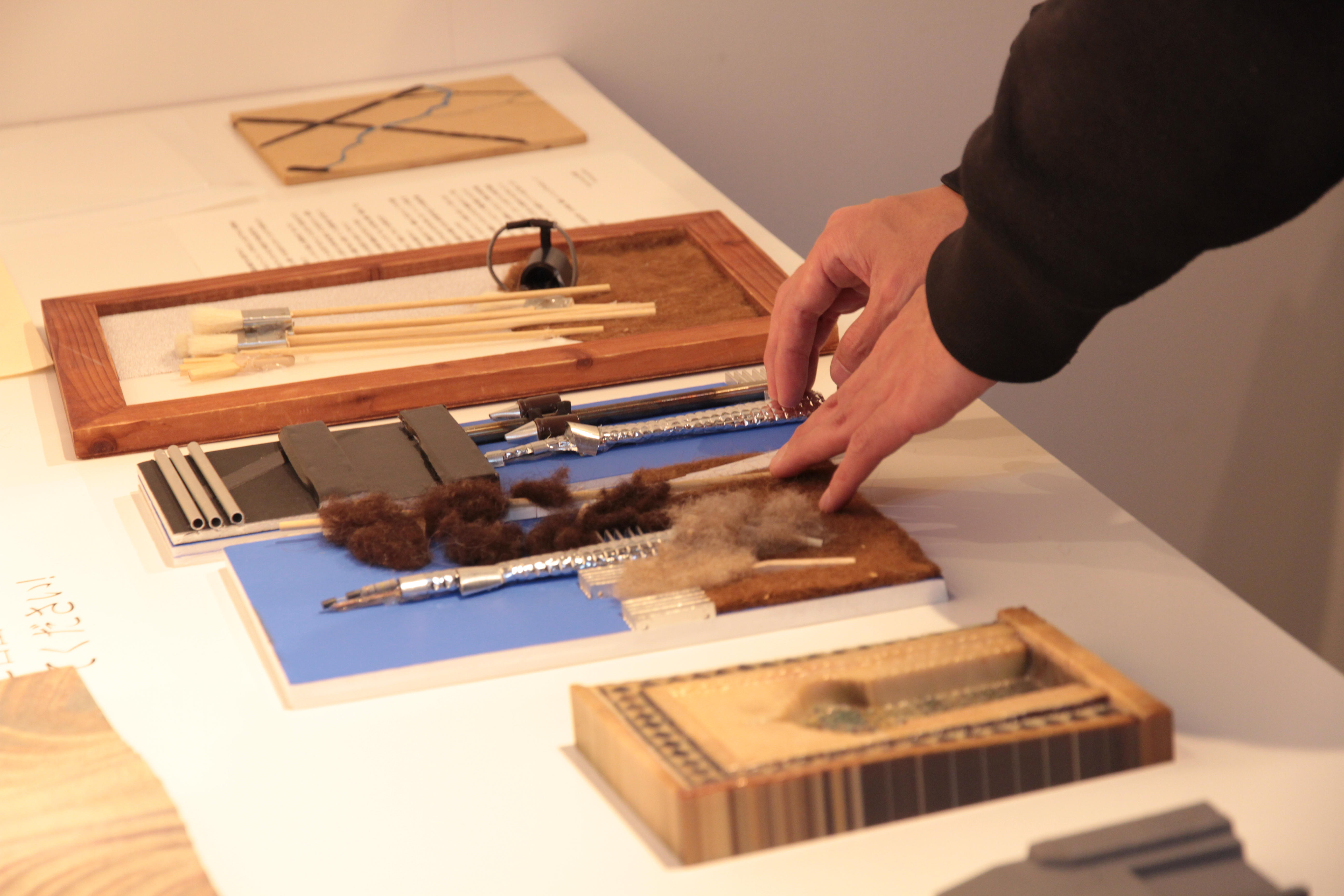Robert Morris, Untitled, 2010
Felt, 261.6 x 256.5 x 94 cm
Robert Morris, Untitled, 1996
Grey Felt, Steel Bar, 199 x 400 x 124 cm
Robert Morris, Untitled (Pink Felt), 1970
Felt pieces of various sizes, overall dimensions variable
Solomon R. Guggenheim Museum, New York, Panza Collection 91.3804
© 2009 Robert Morris/Artists Rights Society (ARS), New York. Photo: David Heald © SRGF
In 1964, at New York’s Green Gallery, Robert Morris exhibited a suite of large-scale polyhedron forms constructed from 2 x 4s and gray-painted plywood. This kind of simple geometric sculpture came to be called Minimalist because it seemed to be stripped of extraneous distractions such as figural or metaphorical reference, detail or ornament, and even surface inflection. Sculptures like the Untitled (Corner Piece), one component of the 1964 suite, boldly delineate the space in which they are located, thus defining the physical and temporal relationship of the viewer to the sculptural object.
Morris’s sculptures often consist of industrial or building materials such as steel, fiberglass, and plywood, and were commercially fabricated according to the artist’s specifications. The value of the “artist’s hand”—the unique gesture that defines an individual’s skill and style—was inimical to Morris, and the work of art became, in theory, not an “original” object but a representation of the idea from which it was conceived. This notion allowed for the creation and destruction of a piece when necessary; Untitled (Corner Piece), for example, can be refabricated each time it is to be exhibited.
In 1968 Morris introduced an entirely different aesthetic approach, which he articulated in an essay entitled “Anti-Form.” In this and later writings he reassessed his assumptions underlying Minimalist art and concluded that, contrary to earlier assertions, the construction of such objects had relied on subjective decisions and therefore resulted in icons—making them essentially no different than traditional sculpture. The art that he, Eva Hesse, Richard Serra, and others began to explore at the end of the 1960s stressed the unusual materials they employed—industrial components such as wire, rubber, and felt—and their response to simple actions such as cutting and dropping. Untitled (Pink Felt)(1970), for example, is composed of dozens of sliced pink industrial felt pieces that have been dropped unceremoniously on the floor. Morris’s scattered felt strips obliquely allude to the human body through their response to gravity and epidermal quality. The ragged irregular contours of the jumbled heap refuse to conform to the strict unitary profile that is characteristic of Minimalist sculpture. This, along with its growing referentiality, led Morris’s work of the late-1960s and early 1970s to be referred to by such terms as Anti-Form, Process art, or Post-Minimalism.










